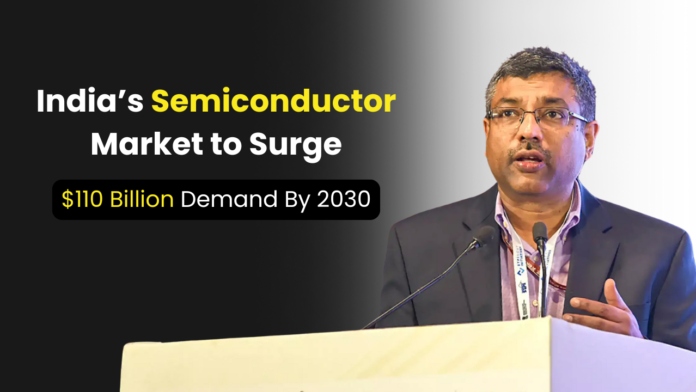28 March 2025, Bengaluru: India’s semiconductor demand, currently valued between $45 billion to $50 billion, is projected to more than double and reach an estimated $100 billion to $110 billion by the year 2030, according to senior government officials. The projection was made during a key industry event in Bengaluru on Thursday, underscoring the country’s growing focus on strengthening its semiconductor ecosystem.
S. Krishnan, Secretary of the Ministry of Electronics and Information Technology (MeitY), highlighted these projections while addressing the Nano Electronics Roadshow held at the Indian Institute of Science (IISc), Bengaluru. He stressed the importance of building a semiconductor-ready workforce and fostering industry-academia collaboration to achieve this ambitious target.
Government Push for Talent Development
Krishnan pointed out that the ministry is prioritizing the development of a skilled workforce to meet the rising demand of the semiconductor sector. “A key focus of the ministry is aligning various efforts to advance the India Semiconductor Mission,” he said, adding that initiatives are underway to develop a talent pool of over 85,000 semiconductor professionals.
The India Semiconductor Mission is one of the world’s most extensive subsidy and grant programs aimed at bolstering domestic semiconductor capabilities. According to Krishnan, nearly 70-75% of investments in major semiconductor facilities worldwide come from public funds and tax-payer money. “Every Indian is a stakeholder in this mission,” he emphasized, underlining the collective responsibility of the government, industry, and academia in ensuring its success.
India’s Strength in Semiconductor Design
Krishnan revealed that India already commands a significant presence in the semiconductor design space, with 20% of the global workforce in this domain based in India. He stressed that it is critical for India to leverage this advantage by expanding beyond design and developing its own fabless companies and semiconductor fabrication capabilities.
“Ensuring the success of the semiconductor sector is not just a government initiative but a collective responsibility shared by the government, industry, and academia,” Krishnan said during his address.
Role of Global Capability Centres and IP Development
While India’s Global Capability Centres (GCCs) have achieved considerable success in recent years, Krishnan noted that India must now focus on fostering homegrown fabless semiconductor companies. He stated that the next logical step in India’s semiconductor journey is to develop robust intellectual property (IP) capabilities and reduce dependency on external markets.
Krishnan emphasized that developing indigenous semiconductor production capabilities will play a crucial role in enhancing India’s economic resilience and national security, especially in the wake of global semiconductor shortages and supply chain disruptions.
Academic Contributions and Nano Centers
The event at IISc also shed light on the significant contributions made by academia toward the semiconductor ecosystem. MeitY has established specialized Nano Centers at prestigious institutions like IISc and IITs, which are actively driving innovation and research in semiconductor technologies.
These academic hubs are playing a key role in fostering innovation and preparing the next generation of skilled semiconductor professionals. During the Nano Electronics Roadshow, student teams from these centers showcased 48 technology demonstrations, highlighting cutting-edge research and design innovations.
Collective Responsibility for a Growing Sector
Industry experts and government officials at the event echoed Krishnan’s remarks, stating that the semiconductor sector’s projected growth represents a crucial opportunity for India to emerge as a global leader in electronics manufacturing.
They stressed that realizing the $100-110 billion demand forecast would require coordinated efforts from all stakeholders, including educational institutions, private sector players, and policymakers.
The event concluded with a strong message to the industry and academia: India’s semiconductor future depends not just on international collaborations and subsidies, but on creating a vibrant ecosystem of talent, research, and innovation at home.
Source: The Economic Times




